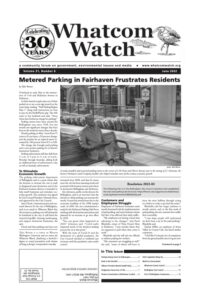by Jamie Ptacek and Futurewise Staff
In the blink of an eye, the 2022 WA Legislative Session has come and gone. Despite the devastating, 11th hour death of HB1099, our bill with Rep. Davina Duerr to add climate change planning to the GMA, this was still one of Futurewise’s most successful legislative sessions of all time.
Although we still have work to do to ensure that vital climate planning requirements are incorporated into the comprehensive plans of the counties and cities with 2024 updates around the corner, there is so much worth celebrating as we reflect back on this session. So, let’s take a moment to review what went down.
Legislative Wrap-Up
Fourteen years later, the GMA’s “Sprawl Loophole” is finally closed!
First introduced in 2008, SB 5042 is finally on its way to the governor’s desk. Words can hardly express how excited we are to see this bill pass.
SB 5042 closes a loophole in the Growth Management Act that previously allowed for growth in rural landscapes that does not comply with the GMA. SB 5042 ensures that new development will stay concentrated in designated urban growth areas, places where homes are easily connected with transit, jobs, and public services.
Good Land-Use Legislation
In a typical legislative session, our Futurewise staff spends most of their energy trying to kill bad land-use bills. This year, the scales shifted. In addition to SB 5042 and HB 1769, our staff helped pass four other land-use bills that are on their way to the governor’s desk. Here’s a quick roundup:
SB 5818 promotes new housing development by exempting certain actions that aim to create greater housing capacity, affordability, and mitigate displacement from being appealed under the State Environmental Policy Act (SEPA) unless those actions pose a significant threat to fish habitats.
SHB 1717 addresses tribal participation in planning under the Growth Management Act. The bill includes several requirements that will improve tribal participation and consultation in comprehensive planning processes, and requires greater communication between local governments, the Department of Commerce, and tribal governments over updated comprehensive plans and development regulations that may impact tribal land and cultural resources.
ESSB 5593 requires jurisdictions to review their Urban Growth Areas (UGA), development patterns, and densities during their comprehensive plan update cycle and enables jurisdictions to revise their UGA to better accommodate development patterns and density pressures as they consider their 20-year growth projections. The catch here is that these changes in the UGA cannot increase the total surface area of the UGA, and areas added cannot be designated as long-term commercial significance or contain more than 15 percent critical areas, must be suitable for urban growth, and be contiguous with the existing UGA boundary.
HB 1241 changes the update cycle for city and county comprehensive plans from 8 to 10 years and requires certain cities and counties to submit a 5-year progress report. If any action needed to implement changes in the most recent comprehensive plan update has not occurred at the time of the report, the jurisdiction must create a work plan to take any needed actions within two years. Our hope is that this change will bring greater accountability for counties and cities to meet the goals in their comprehensive plans.
_________________________
This report was first published at futurewise.org. Thank you to Futurewise for permission to reprint a portion of the report.
For more information, see http://www.futurewise.org/blog/2022/wa-cant-wait-2022-legislative-session-wrap-up.




























